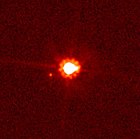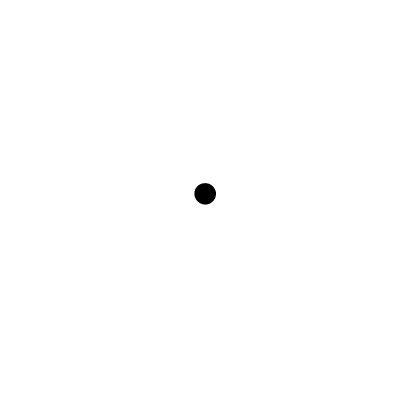Hi,
here it comes, here it goes. Today I will write about planet classification since I want to start to write about dwarf planets. This post will be little similar to Stellar classification but you will see that for planets there are not those classes for size differences. The most important thing is of course to know what is planet and what is not, which I will explain.
Ok in the year of 2006 International Astronomical Union anounced that Pluto is not a planet. It`s been almost ten years but I still know people that  can not get over it. I know this picture is sad (and not to scale).
can not get over it. I know this picture is sad (and not to scale).
For now the definition go as follows:
Planet has to be orbiting Sun
Have to be generally spherical
Has to have enough strong gravity to clear its orbit.
So the thing is that Pluto can only check first two criteria but not the third so such a object is called a dwarf planet.
Also you can see that planet is only object that is orbiting Sun which as it seems is not any exoplanet. This means that those 2000 planets that we found are just a huge objects, but for the official definition they are not planets either. And.. because they are so far away, it can not be known yet if they are spherical or not.
You can see that those definitions are not very good but luckily one guy on some conference proposed new definition which is not yet agreed to be new one but anyway International Astronomical Union will have to make a better one which will be probably very similar to this:
Planet has to be orbiting at least one star or the remains of one. (So yeah, stuff that is orbiting white dwarf is still a planet if it meets the other criteria. Read about multiple star systems)
Planet has to have a clear path to itself. (Sorry Pluto.)
Planet has to have mass lower than the mass of Jupiter. (This is good so we dont accidentaly name brown dwarfs as planets.)
Now we know what are planets. Lets move what are dwarf planets. Those are the objects that are not able to satisfy the third rule, their orbit around Sun is not clean. Dwarf planets are: Ceres , Pluto
, Pluto , Haumea
, Haumea , Makemake
, Makemake , Eris
, Eris and Sedna for example.
and Sedna for example. There are some other candidates also.
There are some other candidates also.
There is type of objects that are called minor planets. Those can be at the same time dwarf planets, like Ceres. The number of minor planets is increasing by very large amount every month. Only few of them are named,  large part is numbered and there is rest for which we dont even know exact orbit. Together there are almost 700,000 minor planets.
large part is numbered and there is rest for which we dont even know exact orbit. Together there are almost 700,000 minor planets.
I did not find exact definition but minor planets should be those that are orbiting Sun, that is about it. They dont have to have any particular size, shape and their path can be trafic jam of asteroids. Actually yes, the asteroids are minor planets and also all the trojans and so on.
Above you can see all the types of objects that can appear in our Solar System except Sun.
Thats about it, I will definitely make post about or more about asteroids, comets and of course I will be continuing with moons.
Dragallur
Pictures are from wikipedia pages: IAU definition of planets, Minor planets and Dwarf planets and the first one is from this page:



 So lets see what this function means:
So lets see what this function means:























 you can see behing the mathematician Ron Graham who invented this number about which I will talk in a while. So those points can not be connected by single color the thing is that when you increase the dimension it is little harder (you already now everything about dimensions if you read my
you can see behing the mathematician Ron Graham who invented this number about which I will talk in a while. So those points can not be connected by single color the thing is that when you increase the dimension it is little harder (you already now everything about dimensions if you read my  When you have 3rd dimension as you can see on the right there are 8 vertices.
When you have 3rd dimension as you can see on the right there are 8 vertices.


 for example it is saying that time is fourth dimension.) which should connect space through higher dimensions and make a shortcut through Universe (picture is from
for example it is saying that time is fourth dimension.) which should connect space through higher dimensions and make a shortcut through Universe (picture is from 
 So the standard object of 3rd dimension is cube. Again when you want to create it you need infinite amount of planes because they dont have any thickness.
So the standard object of 3rd dimension is cube. Again when you want to create it you need infinite amount of planes because they dont have any thickness.

 the objects and the
the objects and the  birds view you would clearly see that those shadows are parallel but from ground and on picture it seems as the shadows head into different directions, so if you dont believe that the Earth is hoaxed you should be convinced. If not you can try it for yourself. Plus if there is some downhill it can be distorted even more.
birds view you would clearly see that those shadows are parallel but from ground and on picture it seems as the shadows head into different directions, so if you dont believe that the Earth is hoaxed you should be convinced. If not you can try it for yourself. Plus if there is some downhill it can be distorted even more. Hi,
Hi,
 the first part of rocket to be used up when its launched. The problem is that something can happen when they are separeted from the rest of rocket (the separation must be precise so it wont move with the rest of the rocket).
the first part of rocket to be used up when its launched. The problem is that something can happen when they are separeted from the rest of rocket (the separation must be precise so it wont move with the rest of the rocket). to complete it (there were also overflow more precise simulations. Each of them took 20,000 hours and there was almost 400 of them). Omg really? On the left is one of those simulations. The violet, red and orange thing is the shockwave. On the end you can see the separation of boosters.
to complete it (there were also overflow more precise simulations. Each of them took 20,000 hours and there was almost 400 of them). Omg really? On the left is one of those simulations. The violet, red and orange thing is the shockwave. On the end you can see the separation of boosters. longer considered to be planet (I will make sure to write epitaph about him).
longer considered to be planet (I will make sure to write epitaph about him). Neptune orbits at the distance of 4.5 billions kilometers. Its radius is 25,000 km and he is little smaller than Uranus but much denser.
Neptune orbits at the distance of 4.5 billions kilometers. Its radius is 25,000 km and he is little smaller than Uranus but much denser. The core makes up two thirds of the planets radius and is made up of rock, ice and some iron and nickel silicates.
The core makes up two thirds of the planets radius and is made up of rock, ice and some iron and nickel silicates. storms and as far as I know they (not counting solar winds :D) are fastest in Solar System.. 2000 kmh. When Voyager 2 flyed around Neptune it saw a giantic storm in its atmosphere. It was similar to Red Giant Spot which is on
storms and as far as I know they (not counting solar winds :D) are fastest in Solar System.. 2000 kmh. When Voyager 2 flyed around Neptune it saw a giantic storm in its atmosphere. It was similar to Red Giant Spot which is on  NASA was too lazy and they used same background twice.
NASA was too lazy and they used same background twice. meters below me, but bottom of Black Canyon can be almost 700 meters (on the picture you can see the tallest cliff in Colorado, it was taken from wikipedia, thanks).
meters below me, but bottom of Black Canyon can be almost 700 meters (on the picture you can see the tallest cliff in Colorado, it was taken from wikipedia, thanks). mars and especially SLS the Space Launch System.
mars and especially SLS the Space Launch System.